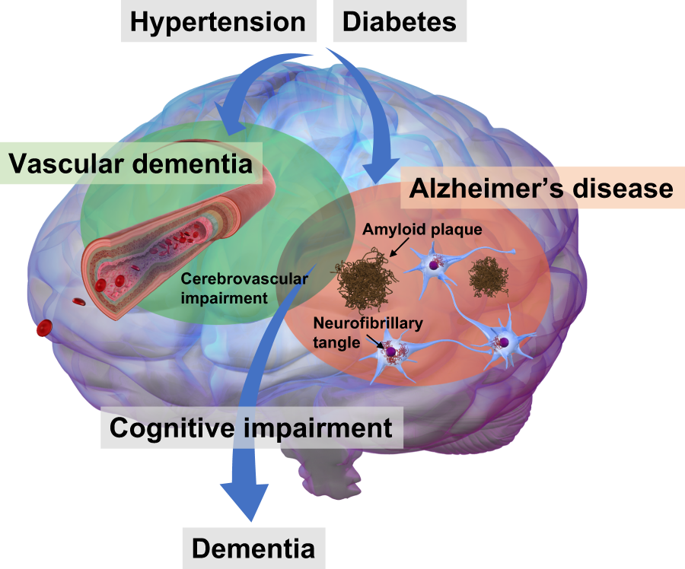当前位置:
X-MOL 学术
›
Hypertens. Res.
›
论文详情
Our official English website, www.x-mol.net, welcomes your feedback! (Note: you will need to create a separate account there.)
Roles of vascular risk factors in the pathogenesis of dementia
Hypertension Research ( IF 5.4 ) Pub Date : 2019-11-14 , DOI: 10.1038/s41440-019-0357-9 Shuko Takeda 1 , Hiromi Rakugi 2 , Ryuichi Morishita 1
Hypertension Research ( IF 5.4 ) Pub Date : 2019-11-14 , DOI: 10.1038/s41440-019-0357-9 Shuko Takeda 1 , Hiromi Rakugi 2 , Ryuichi Morishita 1
Affiliation

|
The number of people with dementia is rapidly growing along with the aging of society and is becoming a social issue worldwide. The results of recent clinical and basic studies have suggested that vascular risk factors, such as hypertension and diabetes mellitus, affect the pathogenesis of dementia. Cerebrovascular damage due to vascular risk factors directly triggers vascular dementia, and it is becoming more apparent that vascular risk factors also increase the risk of neurodegenerative Alzheimer’s disease, which is associated with the accumulation of neurotoxic proteins in the brain. Although disease-modifying therapy for dementia has not yet been established, several studies have shown that the management of vascular risk factors could possibly contribute to reducing the risk of developing dementia, thus making them important targets for dementia prevention. In this article, we review recent findings regarding the relationship between vascular risk factors and dementia, especially focusing on Alzheimer’s disease, the underlying molecular mechanisms, and the potential strategies targeting these modifiable risk factors to prevent cognitive decline.
中文翻译:

血管危险因素在痴呆发病机制中的作用
随着社会的老龄化,痴呆症患者的数量正在迅速增加,并正在成为世界范围内的社会问题。最近的临床和基础研究结果表明,血管危险因素,如高血压和糖尿病,会影响痴呆的发病机制。血管危险因素引起的脑血管损伤直接引发血管性痴呆,而且越来越明显的是血管危险因素也增加了神经退行性阿尔茨海默病的风险,这与神经毒性蛋白在大脑中的积累有关。虽然痴呆症的疾病改善疗法尚未建立,但一些研究表明,血管危险因素的管理可能有助于降低患痴呆症的风险,从而使他们成为预防痴呆症的重要目标。在本文中,我们回顾了最近关于血管危险因素与痴呆之间关系的研究结果,特别关注阿尔茨海默病、潜在的分子机制以及针对这些可改变的危险因素以防止认知能力下降的潜在策略。
更新日期:2019-11-14
中文翻译:

血管危险因素在痴呆发病机制中的作用
随着社会的老龄化,痴呆症患者的数量正在迅速增加,并正在成为世界范围内的社会问题。最近的临床和基础研究结果表明,血管危险因素,如高血压和糖尿病,会影响痴呆的发病机制。血管危险因素引起的脑血管损伤直接引发血管性痴呆,而且越来越明显的是血管危险因素也增加了神经退行性阿尔茨海默病的风险,这与神经毒性蛋白在大脑中的积累有关。虽然痴呆症的疾病改善疗法尚未建立,但一些研究表明,血管危险因素的管理可能有助于降低患痴呆症的风险,从而使他们成为预防痴呆症的重要目标。在本文中,我们回顾了最近关于血管危险因素与痴呆之间关系的研究结果,特别关注阿尔茨海默病、潜在的分子机制以及针对这些可改变的危险因素以防止认知能力下降的潜在策略。


























 京公网安备 11010802027423号
京公网安备 11010802027423号